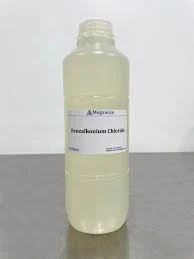polyacrylamide use
Polyacrylamide is a versatile synthetic polymer that has found widespread application across various industries due to its unique properties. As a water-soluble polymer, polyacrylamide can be utilized in diverse environments, particularly where water management and soil treatment are critical.
One of the primary uses of polyacrylamide is in the field of water treatment. It acts as a flocculant, helping to aggregate fine particles in water, which facilitates their removal during the purification process. This characteristic is crucial for municipal water treatment facilities that strive to provide clean drinking water. Additionally, polyacrylamide is employed in industrial wastewater management, where it aids in separating contaminants from water, thereby reducing environmental impact.
.
In the oil and gas industry, polyacrylamide plays a vital role in enhanced oil recovery (EOR). It is utilized in the injection process, where it helps to improve oil flow and increase extraction efficiency. The polymer's ability to create a more stable and viscous fluid enables better displacement of oil within the reservoir, making it a valuable component in the extraction process.
polyacrylamide use

Moreover, polyacrylamide is significant in the realm of biotechnology and pharmaceuticals. Its gel form is commonly used in electrophoresis for DNA and protein separation, offering researchers a reliable means of analyzing biomolecules. This application is fundamental in genetic research and medical diagnostics, underscoring the polymer's importance in advancing scientific knowledge.
Despite its numerous benefits, it is essential to handle polyacrylamide with care due to potential environmental concerns. When improperly disposed of, it may pose risks to aquatic ecosystems. Consequently, ongoing research aims to develop more environmentally friendly alternatives or biodegradable versions of polyacrylamide to mitigate such risks.
In conclusion, polyacrylamide serves as a crucial material across various industries, from water treatment to agriculture and biotechnology. Its unique properties offer significant advantages, promoting efficiency and sustainability. As research continues to evolve, the future applications of polyacrylamide may become even more innovative and environmentally conscious, further solidifying its role in addressing global challenges.
-
Understanding Polycarboxylic Acids: Properties, Applications, and Future PotentialNewsJul.28,2025
-
Scale Inhibitor Explained: How to Protect Your System from Limescale and Hard Water DamageNewsJul.28,2025
-
Scale and Corrosion Inhibitors: Essential Chemicals for Industrial Water System ProtectionNewsJul.28,2025
-
Polyaspartic Acid: A Biodegradable Polymer for Sustainable ChemistryNewsJul.28,2025
-
Isothiazolinones: A Versatile Antimicrobial Class with Industrial Power and Regulatory ChallengesNewsJul.28,2025
-
A Deep Dive into 2-Phosphonobutane-1,2,4-Tricarboxylic Acid (PBTC)NewsJul.28,2025





